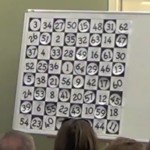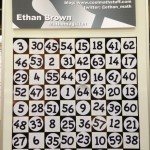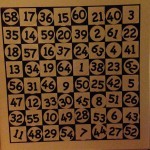(Submitted by Skepticality listener Mark Gouch relayed to The Odds Must Be Crazy by Barbara Drescher.)
Here is the article (includes video) by Barry Wolf, WKYC.
But how can we say this is unbelievable as they do in the article? Sorry, but I can’t help myself here…
The odds would be one out of 365 * 365 * 365, or about one out of 48.6 million births. With 7 billion people on the planet, odds are that this has probably happened about 143 times ( to living persons. many more to those in the past). So rare, fun, and interesting, but not unbelievable.
I believe it happened based on the evidence (their claim that it did, which is good enough).
Actually since everyone has to have a birthday, we can ignore the first birthday, that of the man or the woman. So the odds someone marries someone with the same birthday (date of the year) as them is 1/365.
Then the odds their baby has that same birthday would be 1/(365 * 365) or 1/133,225. So with ~7 billion people this probably happened 52,543 times to persons living on the planet now.
The error in the first calculation is that the date was selected first. That calculation is correct for any specific date, whether it is January 1st or July 4th, or March 15th, or July 22nd. Anyone with better knowlege of probability please correct me if any of the above is incorrect.
As often happens, things that seem unbelievable are quite believable and things that are believed without evidence are not believable.
Below are the extended notes provided by cognitive psychologist and statistician Barbara Drescher for use in Skepticality Episode 246. Take a look and leave your comments below. Also, please be sure to listen to the podcast for our own hilarious commentary. Also, visit Barbara’s blog.
Good job!
You are correct with both calculations. It depends on how you frame it. If you’re wondering the odds of two people with the birthday of January 1st marrying and having a baby on January 1st, then the first is correct, but as you pointed out, that’s not really what’s interesting.
The only thing I would add is that these calculations also assume some things that we know are not true, such as that births are uniformly distributed across the days of the year. Even if natural births were (they aren’t), we’d see fewer births on days like January 1st simply because the number of scheduled C-sections and inductions is lower because it’s a holiday. However, figuring those few things in requires data that probably isn’t available.





